ASUS ProArt P16 (2024) vs. 16-inch MacBook Pro M3 Max: Which premium creator laptop is king?
Is the MacBook Pro still the top creator laptop? The Asus ProArt P16 is giving it a run for its money.
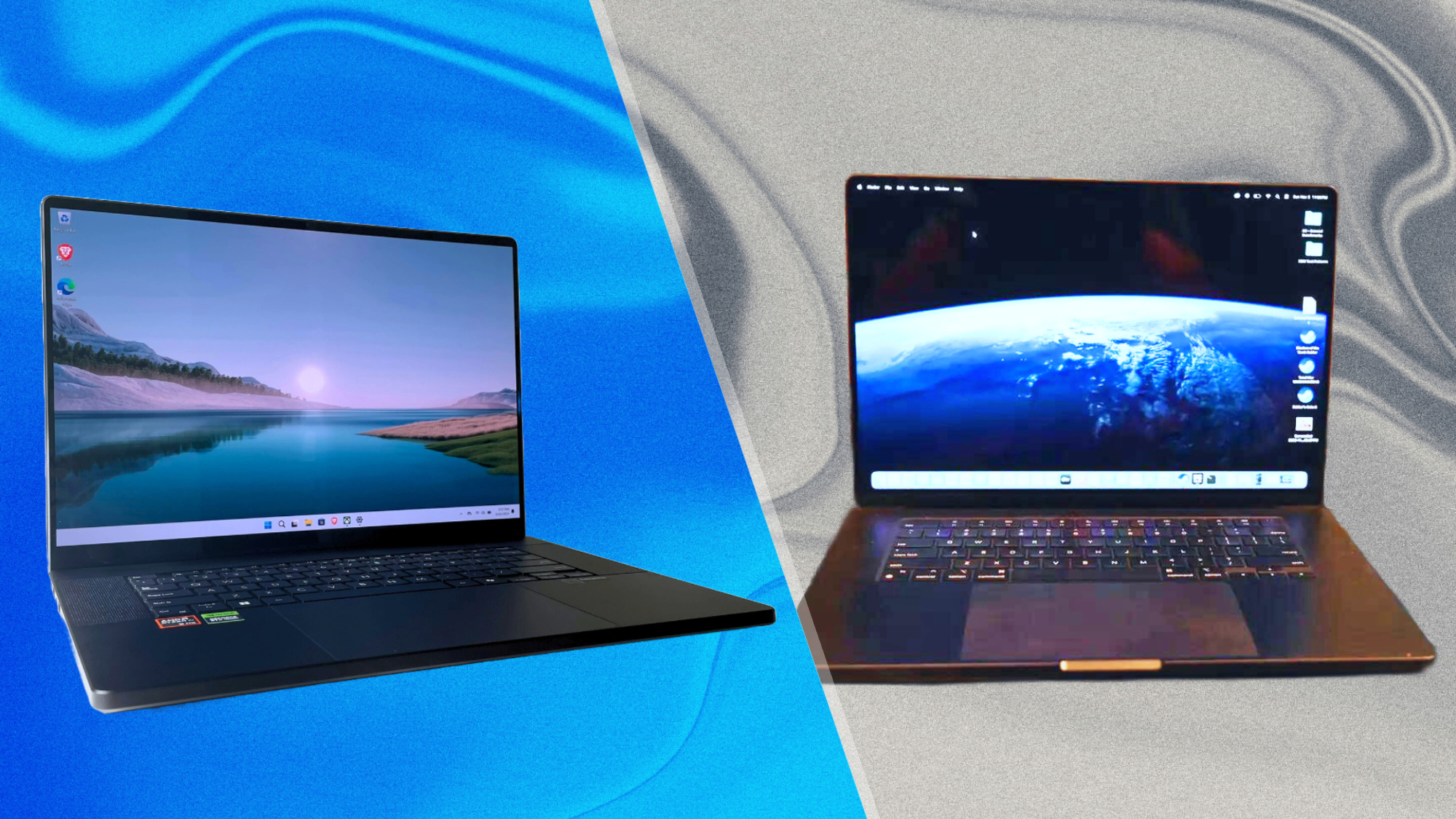
If you're searching for the best laptop for creators, chances are you have your eye on a MacBook — but it might not be the best option on the market.
Whether you're looking for a Windows alternative to the MacBook Pro or want to make sure you get the best creator laptop for your money, you need to consider the Asus ProArt P16. This 16-inch powerhouse is a serious rival for the 16-inch MacBook Pro M3 Max, boasting similarly powerful specs and a stylish design.
Any top creator laptop should feature a good display, powerful processor, and strong graphics performance. Both of these laptops offer that. The question is, which one is the better value for your money?
Here's an in-depth look at how the Asus ProArt P16 and MacBook Pro M3 Max compare.
ASUS ProArt P16 vs MacBook Pro M3 Max: Price and configurations
| Spec | ASUS ProArt P16 | MacBook Pro M3 Max (16-inch) |
|---|---|---|
| CPU | AMD Ryzen AI 9 HX 370 | Apple M3 Max |
| GPU | NVIDIA GeForce RTX 4070 laptop GPU with 8GB of VRAM | Integrated 40-core GPU |
| RAM | 32GB | 48GB |
| Storage | 2TB | 1TB |
| Display | 3,840x2,400 Touch OLED | 3,456x2,234 Liquid Retina XDR |
| Battery life | 9:32 | 18:05 |
| Dimensions | 13.97 x 9.72 x 0.59 inches | 14 x 9.7 x 0.7 inches |
| Weight | 4.08 pounds | 4.8 pounds |
| Price | $2,300 (starting price $1,899) | $3,999 (starting price $3,499) |
The ASUS ProArt P16 and MacBook Pro M3 Max both boast powerful specs, but come at two very different prices. The MacBook Pro M3 Max costs almost $1,700 more than the ProArt P16. That premium does get you 16GB more RAM and a longer battery life, but it's not an easy trade-off.
While it costs less, the ProArt P16 has some compelling advantages. It includes a dedicated GPU and twice as much storage. If you're a creator, those features can make a world of difference. Even the maxed-out configuration of the ProArt P16 with 64GB of RAM costs less than our review configuration for the MacBook Pro M3 Max.
So, unless there's a macOS-only app or you insist on living entirely in the Apple ecosystem, the ProArt P16 is a better value.
Stay in the know with Laptop Mag
Get our in-depth reviews, helpful tips, great deals, and the biggest news stories delivered to your inbox.
Winner: ASUS ProArt P16
ASUS ProArt P16 vs MacBook Pro M3 Max: Design
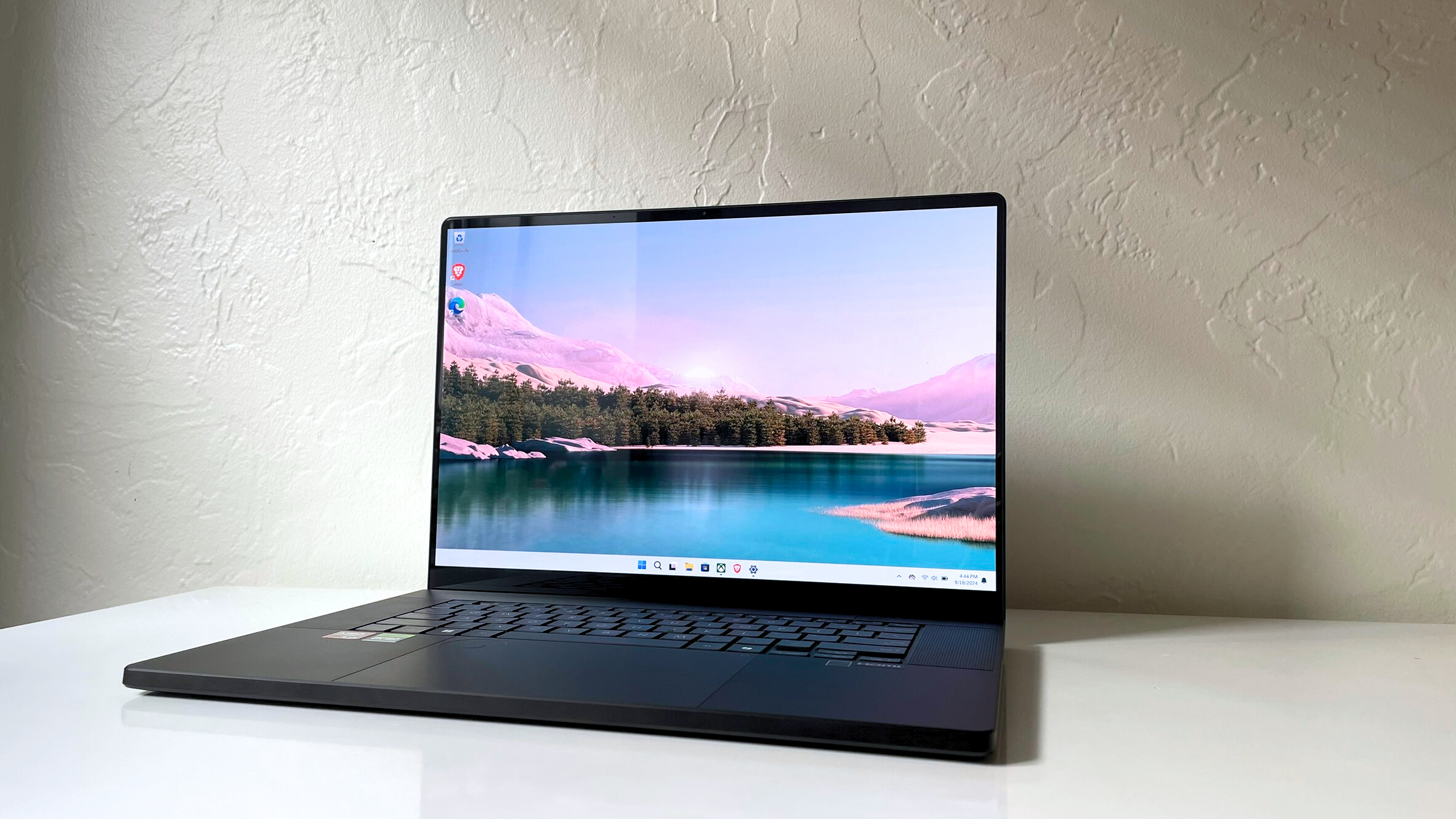
Design is often a matter of personal taste, but in this case, the two designs are fairly similar. The ProArt P16 and MacBook Pro M3 Max both feature clean, minimalistic designs that are hard not to love. Both would look right at home in any office, creative studio, or coffee shop.
With that said, Apple didn't do anything new with the MacBook Pro M3 Max's design. It's the same classic Mac design seen on every other MacBook released over the past few years. It looks great but doesn't evolve beyond the standard Apple aesthetic.
The ProArt P16 also has a simplistic chassis design, but it includes some details that set it apart, like glossy, squared-off edges and a unique touchpad.
The touchpad features Asus's DialPad, a ring set into the top left corner of the touchpad for quick, precise controls. It's designed for creative apps like Adobe Photoshop or Premiere Pro, where shortcuts and navigation are crucial.
Both laptop designs have many similarities. Both feature top-firing speakers on the keyboard deck, a full function row, and a near identical keyboard layout.
So, the ProArt P16 wins this category thanks to a few creative design details. You might not use the DialPad every day, but it's a handy, unique feature specifically for creators.
Winner: ASUS ProArt P16
ASUS ProArt P16 vs MacBook Pro M3 Max: Display
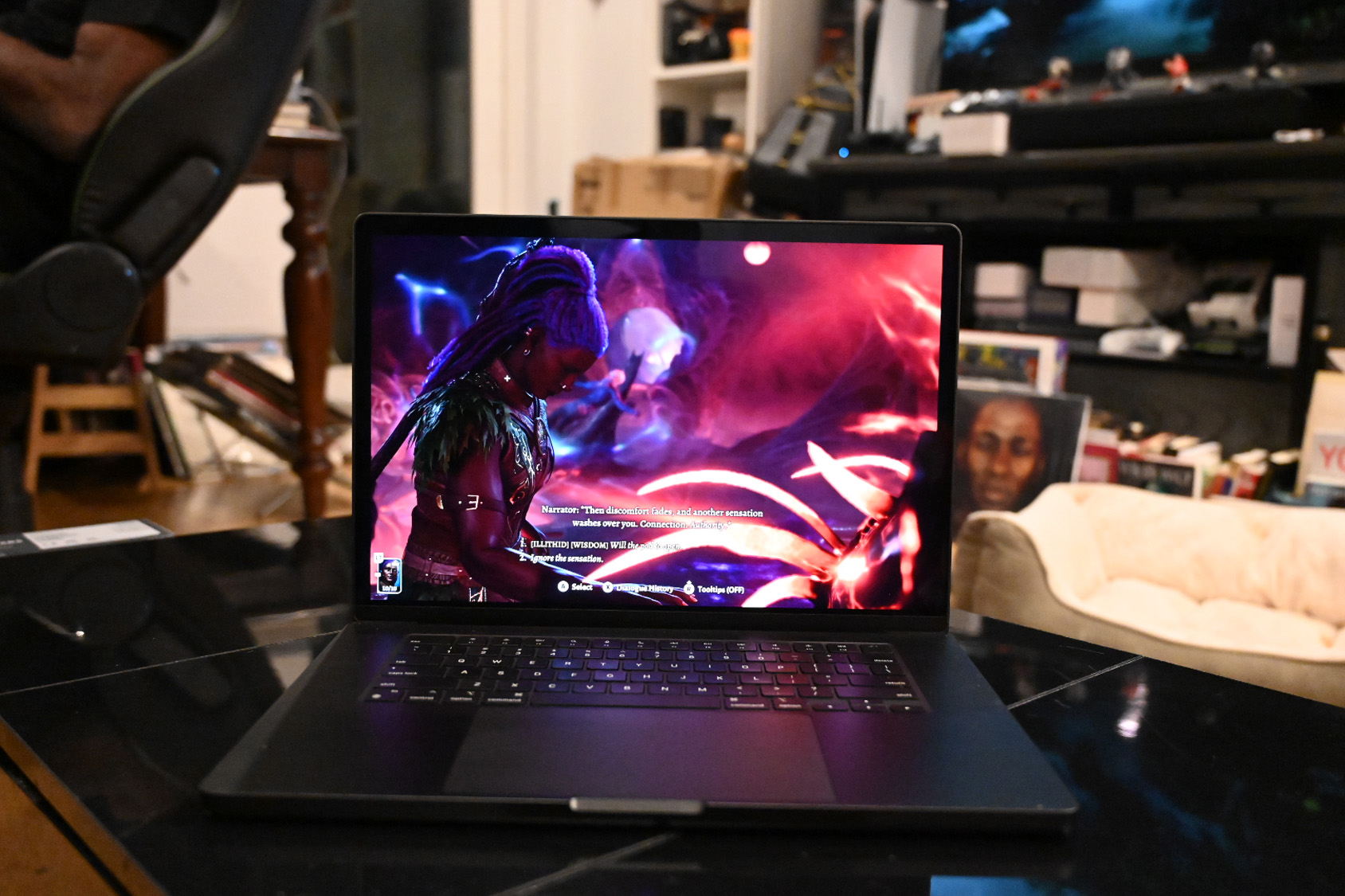
A great display is crucial for any top creator laptop. The ProArt P16 and MacBook Pro M3 Mac each have high-resolution displays that look great in person. However, both could have fared better in our display benchmark tests.
The ProArt P16 reproduced 85.5 percent of the DCI-P3 color gamut, only a few points more than the MacBook Pro M3 Max. While 80 percent or more is typically the minimum score we like to see in this category, I expected more from these two laptops, considering they're geared toward creators. So, it's disappointing that neither scored over 90 percent on this test.
The MacBook Pro M3 Max takes the lead in the display brightness test with an average brightness of 559.8 nits. That's significantly higher than the ProArt P16's average of 356 nits, earning the MacBook Pro M3 Max a win in this category.
Winner: MacBook Pro M3 Max
| Laptop | DCI-P3 color gamut | Avg. brightness (SDR) |
|---|---|---|
| ASUS ProArt P16 | 85.5% | 356 nits |
| MacBook Pro M3 Max (16-inch) | 81.8% | 559.8 nits |
ASUS ProArt P16 vs MacBook Pro M3 Max: Performance

The M3 Max is currently Apple's most powerful MacBook Pro processor, so it's a top contender if you're looking for the best performance possible for creative tasks. AMD is giving Apple some serious competition, though.
The Asus ProArt P16 includes an AMD Ryzen AI 9 HX 370 processor, which has 12 cores and 24 threads. That's similar to the M3 Max, which has 16 cores and 16 threads. More threads generally lead to better multitasking performance, although more cores can also improve multitasking.
So, the MacBook Pro, with its 16-core M3 Max chip, had an edge going into our main overall performance benchmarks. The results highlight a clear winner:
| Laptop | Geekbench 6 single-core | Geekbench 6 multi-core | HandBrake time |
|---|---|---|---|
| ASUS ProArt P16 | 2,872 | 15,286 | 3:15 |
| MacBook Pro M3 Max (16-inch) | 3,158 | 21,182 | 2:36 |
While it was close in a couple of tests, the MacBook Pro M3 Max outscored the ProArt P16 across the board. It scored particularly high in the Geekbench 6 multi-core benchmark, outpacing the ProArt P16 by nearly 6,000 points. Most resource-intensive apps, like Photoshop or Premiere Pro, use multiple cores, so strong multi-core performance is crucial for creatives.
Both laptops' scores are excellent, but if you want the best overall performance, the MacBook Pro is the front-runner.
Winner: MacBook Pro M3 Max
ASUS ProArt P16 vs MacBook Pro M3 Max: Graphics and gaming
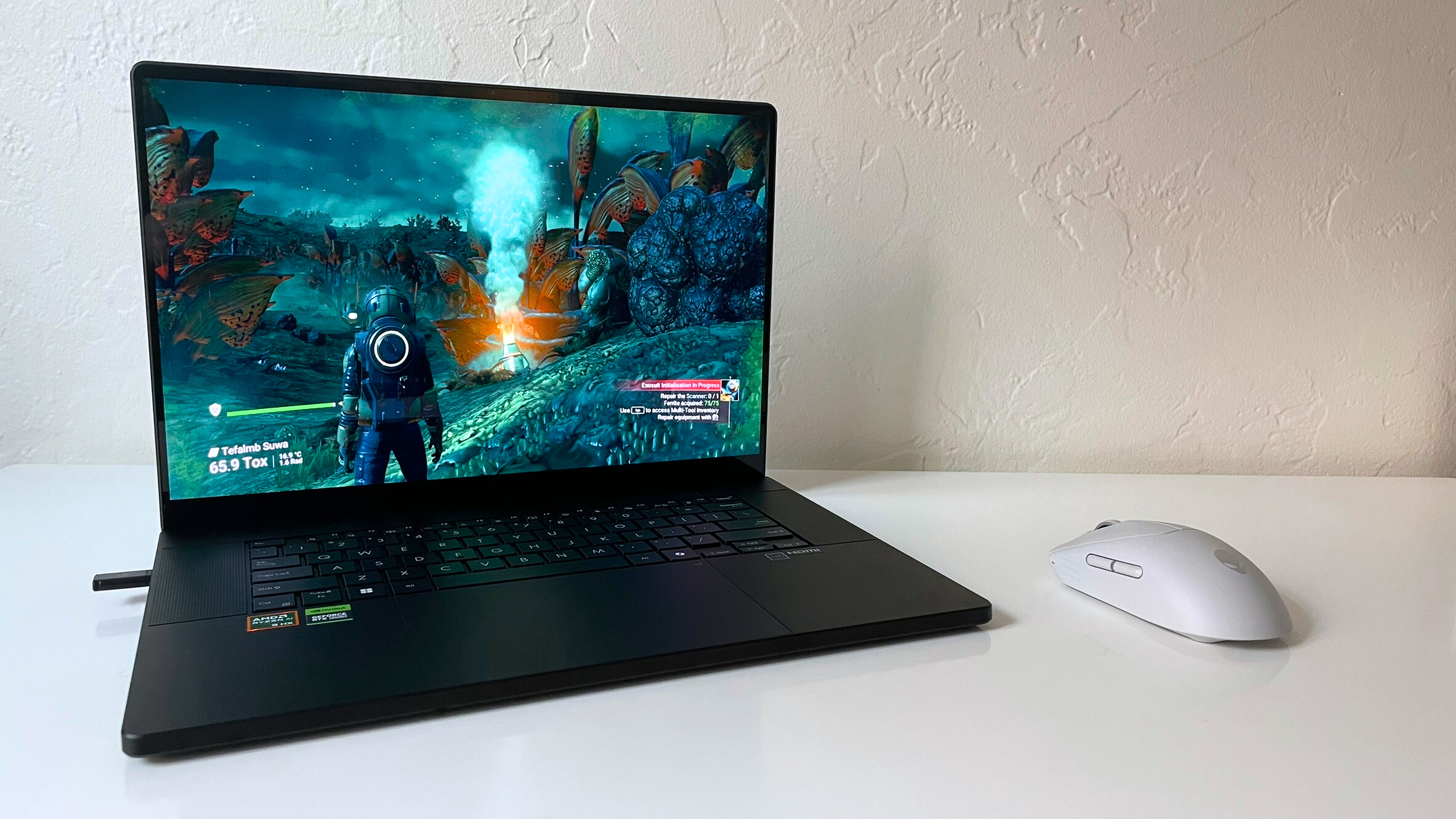
Even if you're not a gamer, graphics performance is a key metric for creatives to pay attention to since it hints at how well a laptop handles graphics-intensive tasks like graphic design, animation, or video editing. The Asus ProArt P16 and MacBook Pro M3 Max are both superbly powerful laptops, but if you want the best graphics performance possible, one has a clear edge.
| Laptop | 3DMark Solar Bay | 3DMark Wild Life Extreme | Sid Meier's Civilization VI: Gathering Storm (native) |
|---|---|---|---|
| ASUS ProArt P16 | 45,650 | 19,681 | 110.8 fps |
| MacBook Pro M3 Max (16-inch) | 21,040 | 13,359 | 57 fps |
The ProArt P16 outscored the MacBook Pro M3 Max across the board in our main graphics benchmarks. That may not be a surprise, considering the ProArt P16 has a dedicated graphics card, an NVIDIA GeForce RTX 4070. The 40-core GPU in the M3 Max chip may be powerful, but it's still integrated graphics. Nine times out of ten, dedicated GPUs outperform integrated graphics, and this is no exception.
The ProArt P16 scored exceptionally high on the 3DMark Solar Bay benchmark. It left the MacBook Pro in the dust, outscoring it by a whopping 24,610 points.
If you're a gamer or plan to use your laptop for some gaming when you're not working on creative tasks, pay special attention to the Civilization VI benchmark results. The ProArt P16 averaged 110.8 frames per second, nearly double the MacBook's score.
While gaming on macOS is slowly improving with better graphics performance and more games, it still can't compete with gaming on Windows, especially on a laptop with a dedicated RTX graphics card. That, combined with much stronger overall graphics performance, earns the ProArt P16 the win in this category.
Winner: ASUS ProArt P16
ASUS ProArt P16 vs MacBook Pro M3 Max: Battery life
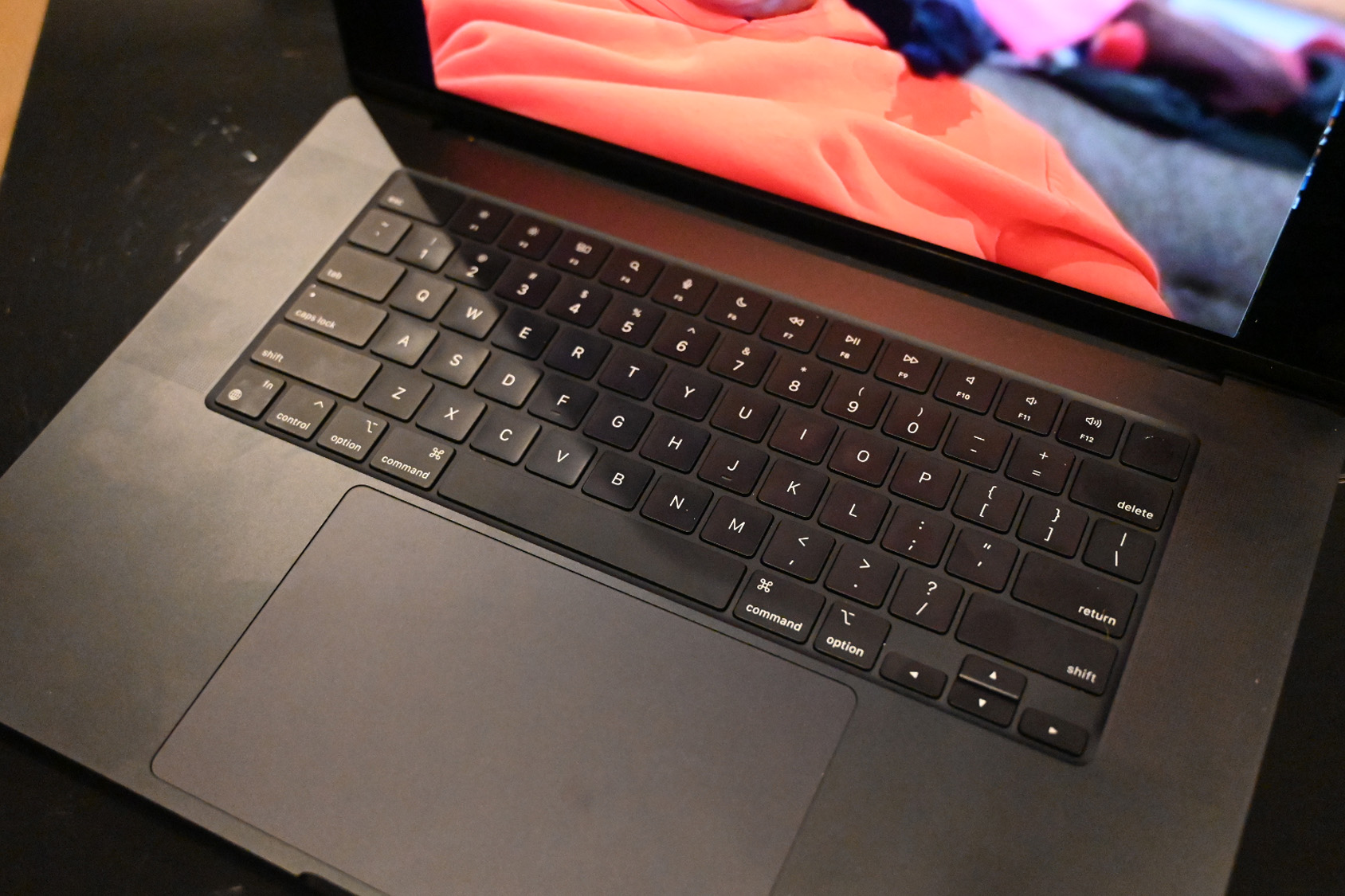
If there's one area where MacBooks consistently trounce the competition, it's battery life. The MacBook Pro M3 Max wins this category with flying colors thanks to its astounding 18-hour battery life. It lasted a full 18 hours and 5 minutes on our battery benchmark test, nearly twice as long as the ProArt P16, which lasted 9 hours and 32 minutes.
The ProArt P16 could probably get you through a full day of work, but if you need to do resource-intensive tasks or gaming, you'll need a charger on hand. That's not the case with the MacBook Pro, so it wins this category.
Winner: MacBook Pro M3 Max
ASUS ProArt P16 vs MacBook Pro M3 Max: Overall winner

The competition between the Asus ProArt P16 and the MacBook Pro M3 Max is close, but when it comes to sheer value for your money, it's tough to beat the ProArt P16. It offers comparable specs to the MacBook Pro M3 Max for a much lower price, with double the storage and a dedicated GPU. That NVIDIA GeForce RTX 4070 graphics card supercharges the ProArt P16's graphics performance, a category that's critical for creative tasks.
Of course, there's no doubt the MacBook Pro is an excellent device for creators. It performed superbly well in our overall performance and battery life benchmark tests. The cost difference is significant, though, and the MacBook Pro M3 Max scored much lower than the ProArt P16 in our graphics benchmarks. So, unless you rely on creative apps that are only available on macOS, the ProArt P16 is better value for your money.
Apple may redeem itself when it launches its M4 MacBook Pro line-up. However, Asus is giving Apple some serious competition. If you're hunting for the best creator laptop right now, the Asus ProArt P16 should be your top contender.
More from Laptop Mag

Stevie Bonifield is a freelance tech journalist who has written for PC Gamer, Tom's Guide, and Laptop Mag on everything from gaming to smartwatches. Outside of writing, Stevie loves indie games, TTRPGs, and building way too many custom keyboards.
